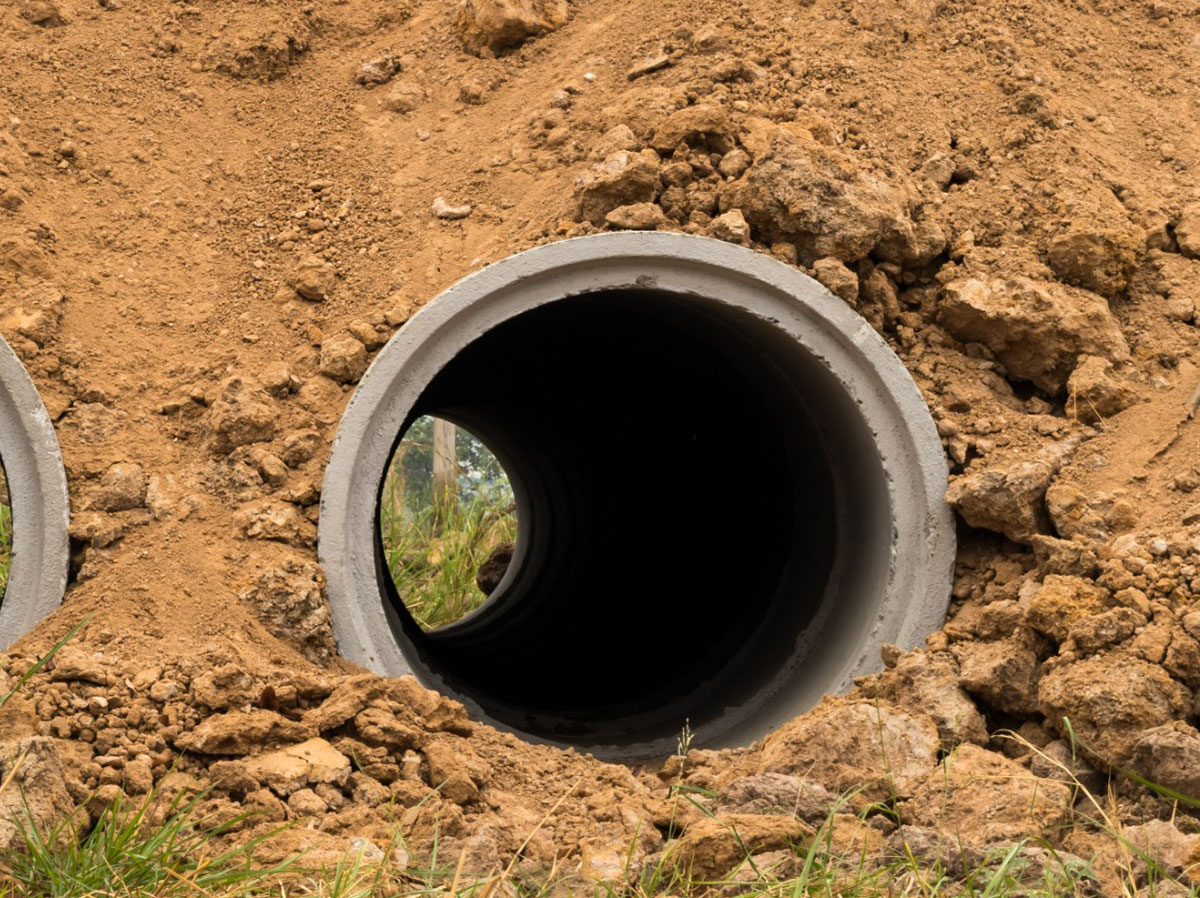Seasoned Tree Removal for Residential Or Commercial Property Security
Seasoned Tree Removal for Residential Or Commercial Property Security
Blog Article
Culvert Installation Facilitated: Step-by-Step Overview for Success
Installing culverts may feel like an uncomplicated task, however making sure an effective end result needs mindful preparation and execution. From selecting the ideal culvert size to integrating proper drainage measures, each step in the installation process plays a critical duty in the performance and longevity of the culvert system. By adhering to a methodical technique and taking notice of vital details, the installation can proceed smoothly, minimizing prospective issues down the line. Remain tuned to uncover the important steps and considerations that can make culvert installation a smooth and effective undertaking.
Choosing the Right Culvert Size
Picking the proper culvert size is critical for making certain efficient water circulation and structural integrity in culvert installment jobs - Pad Construction. The size of the culvert straight impacts the circulation capability of water with the framework. A culvert that is too tiny can cause flooding and overflow, while one that is too huge may cause reduced water rate, potentially causing sediment buildup and clogs
To figure out the right culvert dimension, factors such as the watershed location, peak circulation rates, and hydraulic effectiveness need to be very carefully taken into consideration. Calculations based upon these parameters assist in picking a size that can appropriately manage the predicted water volume while reducing the risk of blockages and structural failure.
It is vital to consult design guidelines and requirements to make certain that the chosen culvert size meets the project needs and neighborhood guidelines (Pad Construction). By choosing the ideal culvert dimension, task supervisors can maximize water circulation, avoid potential concerns, and boost the overall effectiveness and long life of the culvert installment
Preparing the Setup Site
Reliable culvert setup necessitates precise preparation of the setup website to make certain optimal structural support and functionality. Before starting the installment process, it is crucial to remove the site of any debris, plants, or obstructions that can restrain the culvert's positioning. Making certain a degree foundation is vital for the correct positioning and stability of the culvert. This may include rating the website to produce a smooth, even surface area that can effectively support the weight of the culvert and any kind of anticipated lots. Furthermore, proper compaction of the dirt below the culvert is needed to stop settling or shifting with time.
Furthermore, it is necessary to think about factors such as dirt composition, groundwater levels, and ecological effects when preparing the installation site. Performing an extensive site analysis can assist identify any type of prospective obstacles or risks that might affect the culvert's performance. By making the effort to prepare the installment site correctly, you can aid guarantee a successful culvert installation that fulfills architectural demands and guarantees long-term performance.
Positioning the Culvert Correctly

The grade at which the culvert is put is vital for maintaining an appropriate incline for water circulation. A steady incline assists stop merging and advertises reliable water drainage. In addition, the culvert ought to be oriented appropriately to make certain site here that the inlet and electrical outlet remain in the correct places. This positioning is vital for the culvert to function properly in handling water flow.
Backfilling and Compacting the Dirt
Appropriate backfilling and compaction of the dirt around the culvert is vital to guarantee stability and stop potential problems in the future. When the culvert is properly positioned, the next essential action is to backfill the location around it with ideal product. The backfill product go ought to be without rocks, particles, and organic issue to stay clear of damage to the culvert. It is recommended to use granular product such as sand or crushed rock for backfilling, as it offers excellent drainage and compaction residential properties.
After putting the backfill product, it is necessary to compact it in layers of consistent density. Utilizing a compactor or a mechanical tamper, compact the soil gently to prevent harming the culvert. Compaction aids in reducing the chances of settlement and ensures uniform support around the culvert. It is important to small the dirt equally on all sides of the culvert to preserve its architectural integrity.
Appropriate backfilling and compaction not just supply security to the culvert however likewise aid in stopping dirt disintegration and preserving the long life of the culvert system.
Making Certain Appropriate Drainage Assimilation
Incorporating efficient drain remedies plays a critical function in the overall performance and longevity of culvert installations. Proper drainage assimilation is essential for taking care of water flow, protecting against disintegration, and making certain the architectural honesty of the culvert system. To accomplish this, it is crucial to make a thorough water drainage plan that considers factors such as the volume of water anticipated, the topography of the area, and the kind of soil existing.

Furthermore, including features like disintegration control actions, such as riprap or vegetation, can better enhance the effectiveness of the drainage system. By carefully planning and implementing these drainage solutions, culvert setups can function efficiently and withstand the test of time.
Final Thought
In final thought, proper culvert setup is critical for maintaining effective water drainage systems. By selecting the appropriate culvert size, preparing the installment website, positioning the culvert appropriately, backfilling and compacting the dirt, and ensuring appropriate drain integration, success can be achieved. Complying with these actions will assist make sure the long life and performance of article the culvert, eventually adding to the total success of the water drainage system.
Report this page